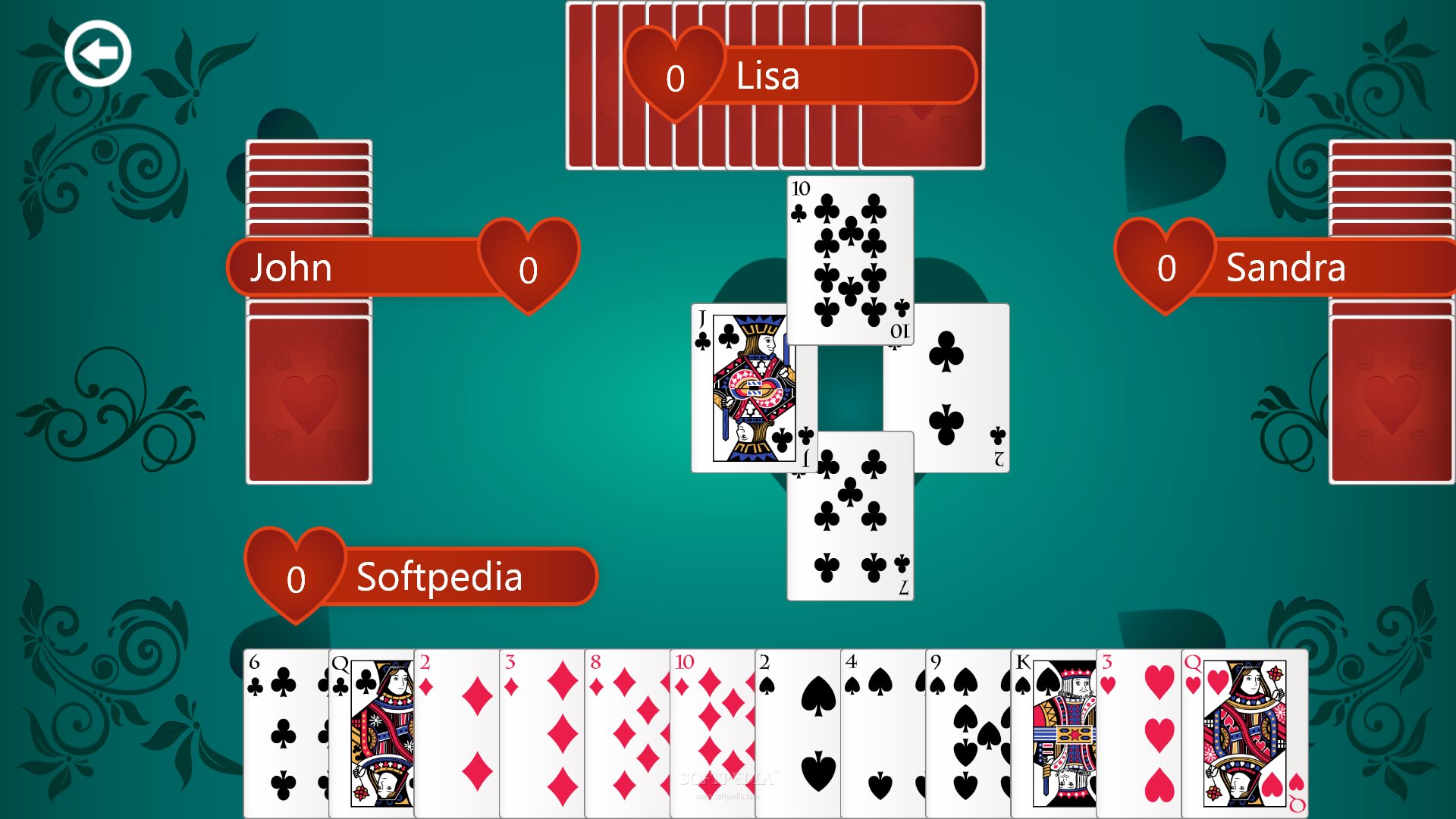

Pallas, Judith, Rachel, and Argine variously ruled each of the four suits, with frequent interruption. Bostock notes that queens have not enjoyed similar reverence. British and French decks, for example, always feature the same four legendary kings: Charles, David, Caesar, and Alexander the Great. While pips were highly variable, courtesan cards-called “face cards” today-have remained largely unchanged for centuries.

The choice of pips is thus partly a reflection of noblemen’s tastes and interests. “I don’t believe the early cards were so logically planned.” A more likely explanation for suit marks, he said, is that they were commissioned by wealthy families.
#GAME OF HEARTS CARDS HOW TO#
Diamonds, by contrast, could have represented the upper class in French decks, as paving stones used in the chancels of churches were diamond shaped, and such stones marked the graves of the aristocratic dead.īut how to account for the use of clover, acorns, leaves, pikes, shields, coins, roses, and countless other imagery? “This is part of the folklore of the subject,” Paul Bostock, an IPCS council member, told me. Bells, for example, were found in early German “hunting cards.” These pips would have been a more fitting symbol of German nobility than spades, because bells were often attached to the jesses of a hawk in falconry, a sport reserved for the Rhineland’s wealthiest. But the disparity in pips from one deck to the next resists such pat categorization. Cups and chalices (modern hearts) might have stood for the clergy swords (spades) for the nobility or the military coins (diamonds) for the merchants and batons (clubs) for peasants. Some historians have suggested that suits in a deck were meant to represent the four classes of Medieval society. Even so, these cards preserved much of the iconography that had fascinated 16th-century Europe: astronomy, alchemy, mysticism, and history. Unlike tarot, however, pips were surely meant as diversion instead of divination. From stars and birds to goblets and sorcerers, pips bore symbolic meaning, much like the trump cards of older tarot decks. Historically, pips were highly variable, giving way to different sets of symbols rooted in geography and culture. These graphic symbols, or “pips,” bear little resemblance to the items they represent, but they were much easier to copy than more lavish motifs. Today’s 52-card deck preserves the four original French suits of centuries ago: clubs (♣), diamonds (♦), hearts (♥), and spades (♠). But the gamblers were responsible for some of the most notable features of modern decks. Forging an ace was a crime punishable by death.Įverybody played cards: kings and dukes, clerics, friars and noblewomen, prostitutes, sailors, prisoners.

Similar bans were enacted throughout Europe as preachers sought to regulate card playing, convinced that “the Devil’s picture book” led only to a life of depravity. In his book The Game of Tarot, the historian Michael Dummett explains that a 1377 ordinance forbade card games on workdays in Paris. Card playing became so widespread and disruptive that authorities banned it. In medieval Europe, card games occasioned drinking, gambling, and a host of other vices that drew cheats and charlatans to the table. Either way, commercial opportunities likely enabled card playing’s transmission between the Far East and Europe, as printing technology sped their production across borders. Yet another hypothesis argues that nomads brought fortune-telling cards with them from India, assigning an even longer antiquity to card playing. A handful of European literary references in the late 14th century point to the sudden arrival of a “Saracen’s game,” suggesting that cards came not from China but from Arabia. Scrolls from China’s Tang Dynasty mention a game of paper tiles (though these more closely resembled modern dominoes than cards), and experts consider this the first written documentation of card playing.

“But they generally agree that cards spread from East to West.” “Scholars and historians are divided on the exact origins of playing cards,” explains Gejus Van Diggele, the chairman of the International Playing-Card Society, or IPCS, in London. The birthplace of ordinary playing cards is shrouded in obscurity and conjecture, but-like gunpowder or tea or porcelain-they almost certainly have Eastern origins.


 0 kommentar(er)
0 kommentar(er)
